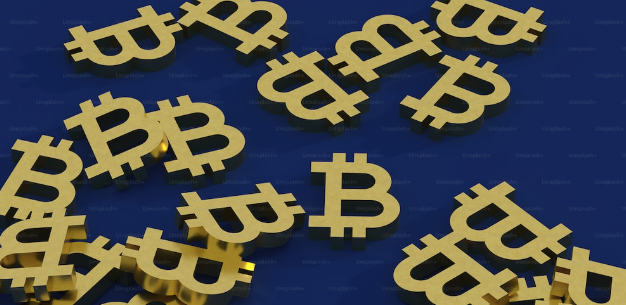The speed and breadth of the digital revolution are encapsulated by transformative technologies such as blockchain and artificial intelligence (AI), including machine learning (ML). These groundbreaking developments have caught the world’s attention individually, but the intersection of these technologies, particularly in relation to cryptocurrencies like Bitcoin and Ethereum, creates even more intriguing possibilities. This analysis delves into the myriad implications and opportunities that the convergence of these technologies offers.
Cryptocurrencies and Blockchain: Re-imagining Financial Constructs
Blockchain technology, the bedrock of cryptocurrencies, has catalysed a shift in the financial realm, creating an ecosystem of decentralised, transparent, and unalterable transactions. The disruption has catalysed the emergence of novel concepts such as smart contracts and Decentralised Finance (DeFi), challenging conventional banking systems.
Fundamentally, blockchain is a decentralised, distributed ledger system ensuring secure transactions across multiple computers. Its attributes of data security, immutability, and transparency forge a reliable, tamper-resistant system. Cryptocurrencies, from Bitcoin to Ethereum and beyond, utilise this technological architecture to provide secure and decentralised transaction recording.
These cryptocurrencies, underpinned by cryptography, assume diverse roles, including medium of exchange, store of value, and unit of account. The inherent design circumvents the need for intermediaries, hence reducing transaction costs and processing times, embodying the ‘trustless’ system.
The advent of blockchain and cryptocurrencies signifies a transformative shift in the economic marketplace, catalysing the transition from traditional financial systems to more independent, efficient, and inclusive ones.
For example, blockchain’s potential to augment transparency and optimise operations has already stimulated interest in sectors like supply chain management. An exemplar is Walmart, utilising blockchain to track food products from farm to shelf, enhancing food safety, curtailing waste, and augmenting efficiency. IBM reported in 2023 that blockchain-enabled operations saved Walmart an estimated £10 million annually, illustrating blockchain’s economic effectiveness.
Yet, innovation invariably introduces unique challenges. Issues such as price volatility, regulatory uncertainties, and security necessities are some of the foremost considerations in this domain. Furthermore, scalability remains a significant hurdle as blockchain infrastructure struggles with burgeoning demand and transactional volume. Consequently, the future evolution of cryptocurrencies inevitably involves mitigating these challenges whilst harnessing emergent technologies, particularly AI and ML.
As AI and ML proliferate, their integration with blockchain technology is a foreseeable progression, presenting promising prospects for enhancing operational efficacy and economic viability of cryptocurrencies.
AI and ML algorithms can anticipate cryptocurrency price trajectories by analysing past data and recognising patterns that human analysis may miss. This could equip investors with vital insights, facilitating informed and potentially lucrative trading decisions.
Moreover, these technologies could bolster blockchain security. Unsupervised ML algorithms can identify unusual patterns and potential security infringements, thus protecting digital assets.
Nonetheless, integrating AI with blockchain presents its own set of challenges. Predominant amongst these are data privacy concerns and potential manipulation of AI technologies for deceitful ends, such as artificially inflating cryptocurrency prices. Hence, it is essential that robust regulations and safeguards are established in tandem with these technological advancements.
The fusion of AI and ML with cryptocurrencies offers significant potential advantages for the technology sector. For instance, the notorious energy consumption of Bitcoin and other proof-of-work cryptocurrencies could be addressed by AI optimising mining processes or managing energy resources effectively, thereby curtailing overall costs and environmental footprint.
Additionally, operational efficiency could be substantially enhanced by employing AI. Machine learning algorithms could automate blockchain transaction verification, obviating the need for human intervention and related costs. By streamlining operations, tech businesses could realise substantial cost savings while improving security and performance.
Cryptocurrencies and AI: A Vision for the Future
Over the coming years, the integration of AI, ML, and cryptocurrencies will deepen, catalysing innovative solutions and services in digital finance. As AI augments predictive capabilities, markets may become more stable and predictable, promoting broader cryptocurrency adoption.
However, as these technologies mature, regulatory bodies must stay abreast, ensuring ethical and secure applications of AI and ML in the blockchain domain. Appropriate policies must strike a delicate equilibrium, encouraging innovation while protecting against misuse and data privacy violations.
The integration of AI and ML with blockchain technology ushers in a captivating era for cryptocurrencies. While the path ahead is laden with innovation, it also harbours challenges that necessitate a proactive, interdisciplinary approach. As we anticipate this compelling evolution, the need for dialogue among AI researchers, cryptocurrency experts, economists, legal scholars, and policymakers becomes paramount.
The amalgamation of blockchain and cryptocurrencies exemplifies a profound fusion of technology and economics, promising transformation while posing novel challenges. The intersection of these dynamic fields can engender more inclusive, efficient, and equitable economic models. It is, however, essential to tackle the associated challenges to fully exploit this technological and economic revolution. As the demarcation between technology and economics becomes increasingly blurred, the future of blockchain and cryptocurrencies in this transforming landscape remains an open question. The discourse continues, and the world watches with keen interest.

